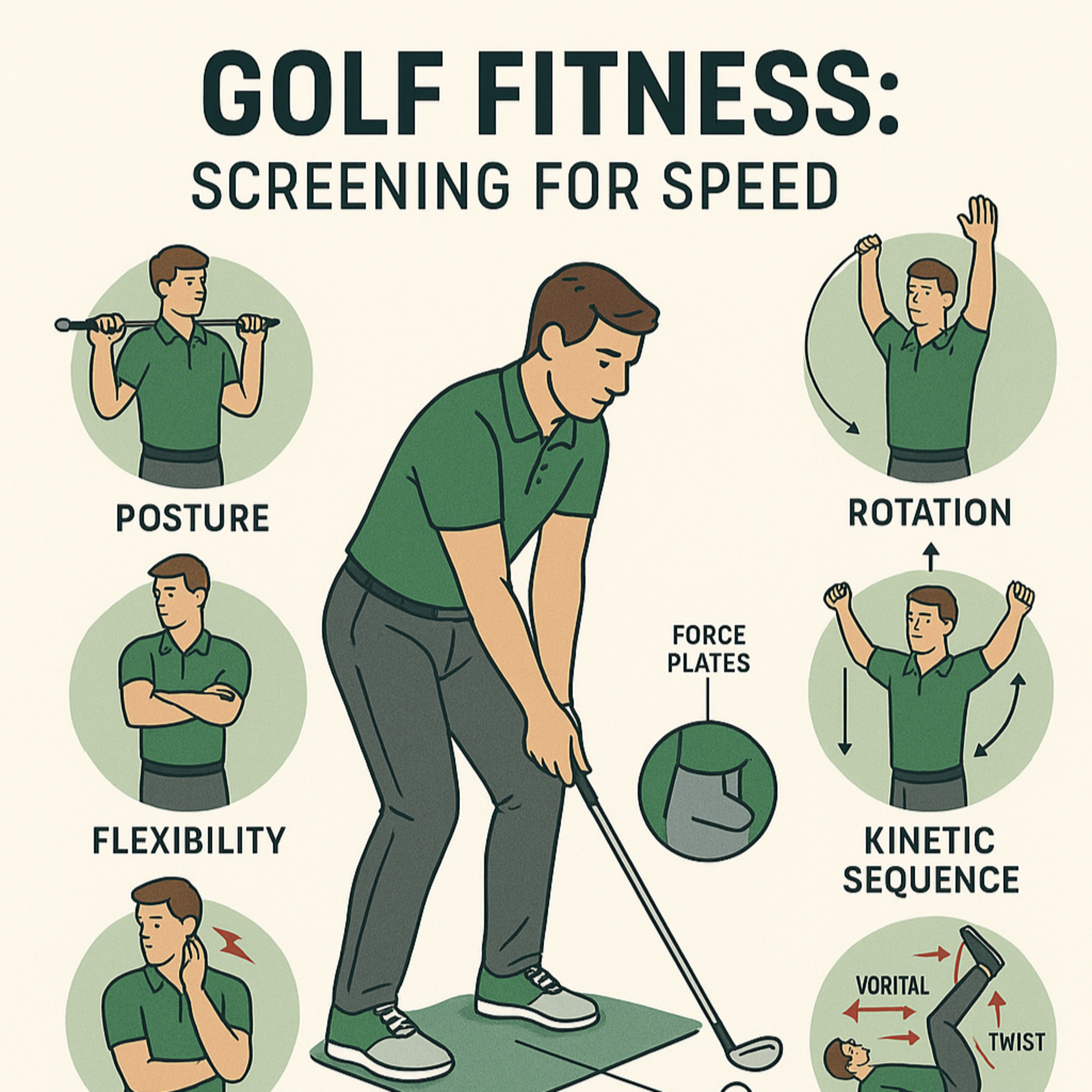#339 Golf Fitness: Screening for Speed
- Author
- Golf247.eu
- Published
- Sun 07 Sep 2025
- Episode Link
- https://podcasters.spotify.com/pod/show/puttin-pro/episodes/339-Golf-Fitness-Screening-for-Speed-e37s9eg
Optimizing a golf swing starts with understanding the body. A personalized golf fitness assessment identifies key movement patterns, physical limitations, and potential pain sources—laying the foundation for faster, safer, and more efficient swings.
The process begins with a structured physical screen. Golfers are placed in a five-iron posture and asked to tilt the pelvis forward and backward—imagining a bucket of water at the belt. Upper body rotation is tested while keeping the shoulders quiet, followed by overhead squats to assess ankle mobility. Arm rotation, leg raises, and head movements help detect asymmetries, tightness, or discomfort. Each test builds a detailed movement profile, comparing left and right sides to uncover restrictions.
A strength test follows: single-leg extensions with a level pelvis reveal core control and contribute to a golf fitness handicap—a functional score reflecting how physical capacity influences golf performance. Pain, range of motion, and stability are factored into this score.
Power testing uses force plates to analyze how a golfer produces speed. These plates measure force from the ground up—tracking the kinetic sequence of lateral shift, rock, twist, and vertical push. For example, one player moved 31% of body weight laterally (Tour average is 23%) and twisted too early, which steepened the swing. Vertical force was 167% of body weight, slightly below the 198% average, highlighting an opportunity for more lower-body activation.
Some assessments reveal deeper concerns. In one case, discomfort radiating down the arm suggested a potential herniated disc—a condition where the inner “jelly” of the spinal disc pushes backward, pressing on nerves. This can lead to numbness, pain, or weakness. While an MRI offers confirmation, treatment should begin early, focusing on mobility, gentle decompression, and avoiding aggravating motions. Cervical traction pillows, for instance, can help relieve pressure.
Reverse spine angles are another common fault—where the upper body tilts the wrong way at the top of the swing. This not only limits power but increases neck and back stress. It creates a chain reaction, disrupting sequencing and increasing injury risk.
All gathered data feeds into a customized, AI-powered training plan. Delivered via app, these workouts target each golfer’s specific issues—whether it’s trunk rotation, hip mobility, strength imbalance, or poor sequencing. For instance, teaching “load right to go left” improves weight shift and timing. Improving setup and pelvic alignment reduces compensation and builds more repeatable, efficient movement.
For golfers of all ages, especially those over 40, maintaining leg strength is essential. It supports ground reaction force, protects the spine, and guards against instability later in life. Early, targeted strength training is key to long-term health and swing speed.
This comprehensive approach—assessment, analysis, and AI-driven workouts—empowers golfers to unlock speed, stay pain-free, and play better for years to come.
